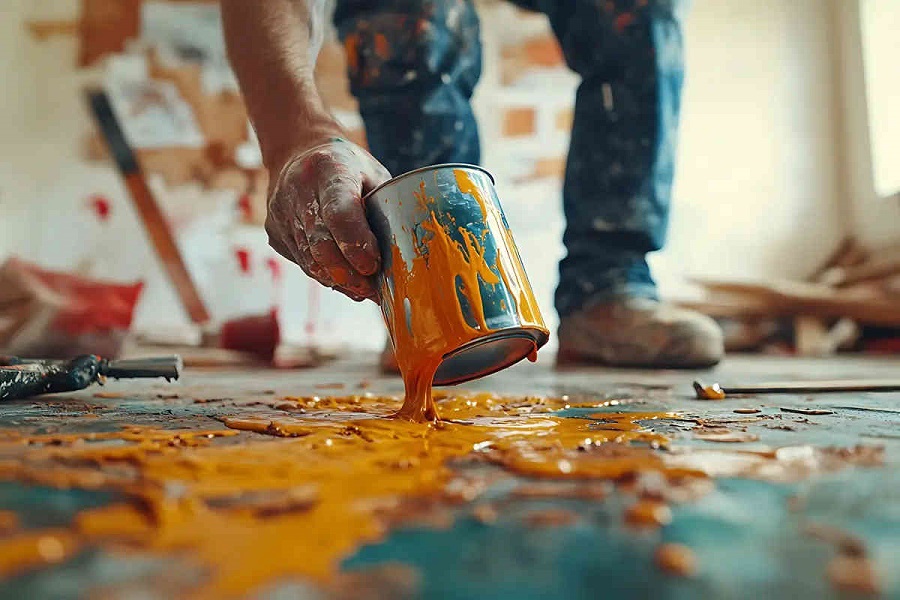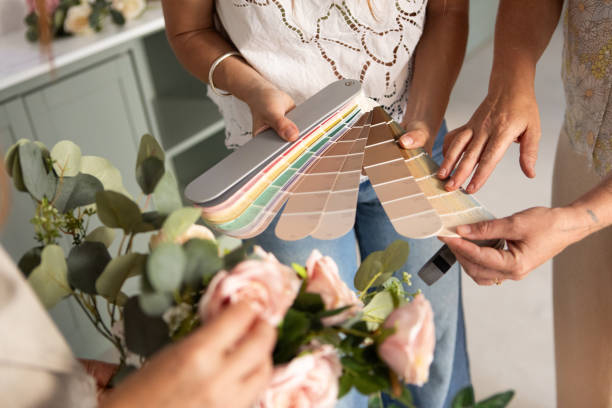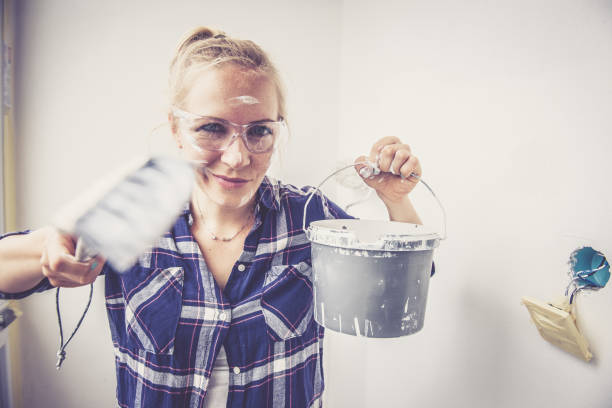Painting your home can be a satisfying DIY project, but it isn’t without its challenges. Even DIY enthusiasts can make common painting mistakes that will have your walls looking far from perfect. For over 20 years, Nevis Paints has been servicing its customers with one mantra —Get It Right The First Time. Whether you’re sprucing up just one room or painting your entire home, here are some common mistakes and how to avoid them.
Skipping Surface Preparation
Mistakes happen with the best of us, and one of the most common mistakes is not preparing the surfaces. A patchy finish and poor paint adhesion can be the result of painting over dirt, dust, or uneven surfaces.
How to Avoid It:
- Dust and grime on the walls: Use a damp cloth to wipe the walls to clean them.
- Patch cracks or holes with filler, and sand the surface smooth.
- Apply a primer to even out the surface, particularly when painting over a dark color or a shiny surface.
Here at Nevis Paints, we suggest a little preparation goes a long way towards making your results look professional.
Using the Wrong Tools
Using brushes/rollers that don’t have great quality can lead to streaks, bristles in paint, and an uneven finish.
How to Avoid It:
- Use high-quality brushes and rollers for the type of paint you are using.
- Water-based works better with synthetic brushes, while (best) oil-based paints adhere to natural bristles.
- Pick the right roller nap for your surface – shorter naps for smooth walls, longer naps for textured surfaces.
With everything you need for a perfect finish, Nevis Paints has everything you need.
Not Testing Paint Colors
It’s all too easy to be disappointed if you order a paint color straight from a swatch without testing it. The colors can appear different under different lighting.
How to Avoid It:
- Buy sample pots and try the colors on your walls.
- How does the color look with different daytime lighting or artificial lighting?
- Think about the room’s function and what mood you want to set before you choose a color.
Nevis Paints has a variety of sample pots that you can use to select just the right shade for your home.
Applying Paint Too Thickly
Overapplying in one coat causes drips, uneven drying, and a streaky finish.
How to Avoid It:
- Apply one thin coat of paint, let it dry completely, and then apply another coat.
- Do not overload your brush or roller with paint.
- Follow the manufacturer’s recommended drying times between coats.
Disregarding the Weather Conditions
Extreme temperatures or high humidity can impact the drying process and the final product of paint.
How to Avoid It:
- From early October until early May, it is preferable to paint when the weather is warm between temperatures, ideally between 10°C and 25°C.
- Do not paint during rainy or extremely humid days, as moisture will not allow for a proper drying of the paint.
- The room must be well ventilated to consider drying.
Failing to Secure Surrounding Areas
Neglecting to protect furniture, floors, and fixtures may cause accidental paint splashes and stains.
How to Avoid It:
- Use drop cloths or plastic sheets to protect furniture and floors.
- Apply painter’s tape to protect edges, skirting boards, and window frames.
- Before painting, remove or cover light fixtures and switch plates.
Rushing the Job
So, painting a photo is showing such an amplitude of patience. The process requires time and a desire to get the results, as rushing through it may yield a mistake or a not-remarkable end.
How to Avoid It:
- Does it require giving yourself time to do a project without a lot of stress?
- To do it, you need to have a systematic approach—start from the top of the wall till the bottom.
- Break up your tasks to minimize fatigue, which can result in sloppy work.
Painting With the Wrong Paint for the Job
Example: Wrong Type of Paint for the Surface or Room, Poor durability and finish can be achieved if the wrong type of paint is used for the surface or room.
How to Avoid It:
- Select the right paint for the surface, like masonry paint for outside walls or a moisture-resistant paint for bathrooms.
- Think about the finish—matt for a discreet look, satin for a slight sheen, or gloss for humid zones.
- Make sure it’s the right kind for the job by reading the label.
Nevis Paints, different paints for different surfaces and different needs.
Overlooking Maintenance
Even the best paint job will require maintenance to remain looking fresh and vibrant.
How to Avoid It:
- Wipe painted surfaces regularly with a gentle cloth and mild detergent.
- Apply touch-ups to chips and scratches promptly to avoid it from getting worse.
- Spot repaint high-traffic areas as necessary to keep them looking pristine.
Neglecting to seek professional advice
At times, DIY painting projects become far from what we expected. Some costly mistakes can be avoided by seeking professional advice.
How to Avoid It:
- Experts at Nevis Paints can guide you in choosing paint, tools, and the execution of a good technique.
- Use in-store guidance and online tools to improve your painting skills.
- If you’re uncertain about any part of the job, don’t hesitate to hire a professional for complex projects.
Repainting your house doesn’t have to be an intimidating task. If you want to achieve a professional-looking paint job that will elevate your living space, avoid these common blunders and follow our expert advice. At Nevis Paints, we are dedicated to assisting you every step of the way, from selecting the correct products to offering useful advice.
Whether you’re a seasoned DIYer or a first-time painter, though, Nevis Paints has all you need to transform your home with confidence. Come see us today to determine the best fit of paint and accessories for your needs, and let’s get started on your next painting project!






